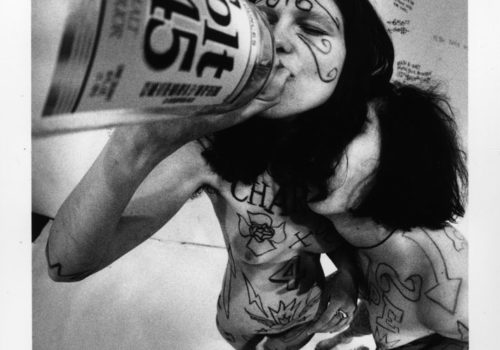The book is a tool of the revolution. It seeds the mind with ideas that spark fires and flames, burning with a passion for connection through conversation and communion through contemplation of the image and the word. The book allows us the opportunity to think critically, to examine, evaluate, and reflect upon the world at large and our path along the way, to consider the ways in which we share this journey together. United across time and space, all barriers disintegrate with each turn of the page. The deeper we go, the more we share of ourselves, opening up to worlds we might not otherwise know, were it not for the will and the force of the artist, the author, and the publisher.
The publisher is a revolutionary, working against the grain, offering modes and models of interpretation that inspire, provoke, and lay their claim upon the possibilities that exist in this life, and in the next. The book, as we know it today, began as a movement of literacy, of a means for the individual to connect through the word and the image to the very essence of life itself. Perhaps this is because the book is designed to live in a state of independence, to exist freely on its own, to be created and recreated as a conversation between author and reader with each and every turn of the page.
At a time when many are quick to decree, “Print is Dead!” the book publisher stands as captain the helm of the ship, committed to sail through the storm, to keep the presence of mind to know that the magic of ink on paper can be reproduce in no other form.I t is a tribute to the power of the form that Drago exists, a vision of publisher Paulo Lucas von Vacano who has been immersed in the urban and contemporary art scene since he first left home at the tender age of fourteen.
It was 1980. London. A new world was rising, one that had come up from the ashes like the phoenix. Punk, which is to say, to create something out of nothing, to spark a movement of man against the machine. “Je ne regrete rien. I did it my way,” von Vacano notes, explaining his worldview as a remix of Edith Piaf and Frank Sinatra. “At Drago, we do not see only artistic finality at the museum; we know many artists will never arrive in the art market. We believe that people are here to serve a cause, to serve social models, not the capitalistic answer of sponsors and galleries and playing into the establishment. The artist can destroy everything.”
Indeed, it was Joseph Beuys who said, “I think art is the only political power, the only revolutionary power, the only evolutionary power, the only power to free humankind form all repression.” It is in this way that we can reflect on the contemporary art scene, of the rise of the streets and the urban vernacular to create a populist movement of art for the people, by the people, as a part of their every day life. Art stripped from the museums and the mausoleums and returned to the world from whence it sprung.
Drago puts forth an impressive list of titles that change the way we view the world, offering a look through the eyes of celebrated artists including photograffeur JR; photographers Estevan Oriol, Alex Flach, CB Smith, Papik Rossi; a ten-year retrospective of New York’s Alleged Gallery; and street artists including WK Interact, Miss Van, Chris Stain, and Logan Hicks, most many others.
“Street art has the biggest gallery of the world. It is a symbol and a statement of culture over the last 20–30 years. Here information is like a virus and it opens the brain and lets in the image,” von Vacano observes. “Today the image is everything. You see it everywhere. The image is a punch in the stomach and artists become cultural killers. They use the photograph and the machine as a gun; they crawl inside the object of love and of hate and learn by themselves. We never know when the cultural killer will finish, or when they will start. They are living the dream and the most interesting part is the streets.”
The streets are ephemeral; they capture the spirit in which we live, they become part of our world, as we become part of theirs. But the ever-changing nature of the form requires the photograph to preserve it and share it with others. It is the book, then, that becomes the repository for the souls of the cultural killers whose work exists long after the original has disappeared. It is the book that becomes the way in which the artist can speak, their voice in your voice in your mind, their images in your brain.
Drago reminds us of the power of the artist, the image, and the book. As von Vacano concludes, “It is an essential thing to hold eternity in a frame. The book remains forever and becomes a part of our evolution. There is no future without the past and the book is a way to hold the magic moment.”
Miss Rosen
















